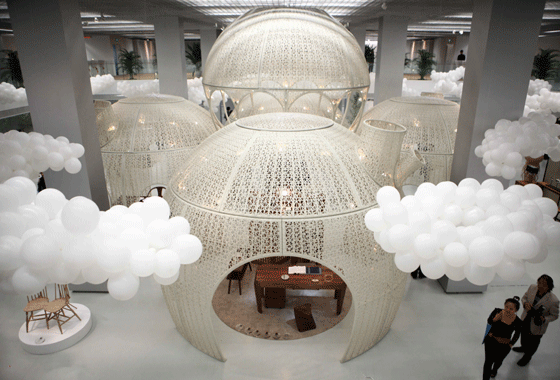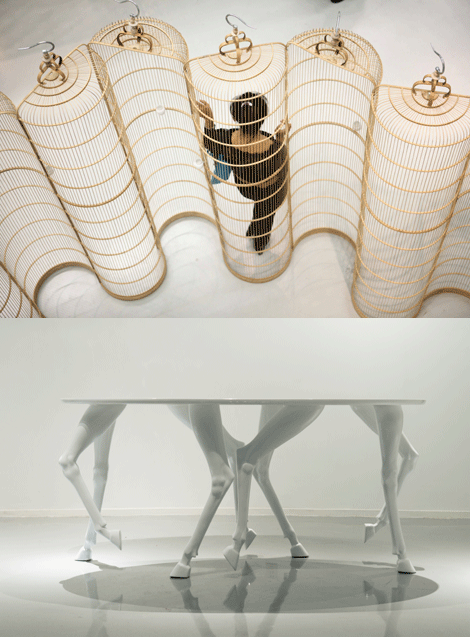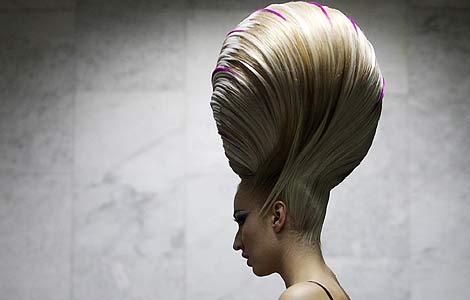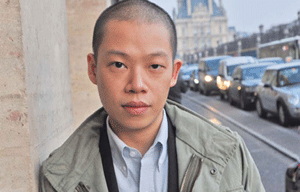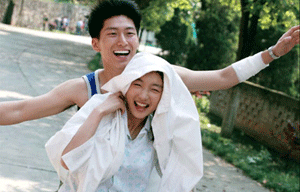Spirit of the past
Updated: 2011-09-30 08:26
By Chen Nan (China Daily)
|
|||||||||
|
Zhang Xiaochuan's installation, Dream Pavilion, presents a dreamlike scene with cloud-shaped artworks floating above white lattice-patterned tents. [Photos by Wang Jing / China Daily] |
The artworks on display at China Design Week aim to showcase nation's tradition of innovation. Chen Nan reports.
More than 30 Chinese designers are taking part in Beijing Design Week that opened on Sept 26 at China Millennium Monument, with at least 150 artworks linked to its theme, Landscape of the Spirit.
"It isn't just another exhibition," says award-winning furniture and interior designer Liu Feng, who is also one of the curators of the exhibition. "It's an opportunity to show original Chinese design from veterans and newcomers, and introduce new brands."
"Ours is the country that invented gunpowder, wrought iron, the compass, paper, silk and printing. We have a tradition of design and discovery," he says.
Visitors entering the exhibition space are immediately surrounded by cloud-shaped artworks floating above white tents with a lattice pattern. These are the installations, Dream Pavilion, of designer Zhang Xiaochuan.
The paintings and poems printed along the walls of the hall contrast with the futuristic artworks, and are aimed at juxtaposing the modern with the ancient.
"We want to lead visitors into a dream world," says one of the curators Sun Wentao. "This is an exhibition whose theme is Chinese design, so Chinese culture is the focus. You can feel the Chinese flavor in not only the artworks, but also in the decoration of the venue, which is quiet and surreal, like a traditional Chinese garden."
All the works displayed employ elements of Chinese culture that speak to the nation's rich history of innovation.
Sun's Bamboo Series is itself inspired by the 36-year-old designer's love of bamboo.
Sun, who hails from Shenyang of Liaoning province, graduated from the Academy of Art and Design of Tsinghua University with a major in sculpture.
The Bamboo Series, which was completed in 2010, comprises five artworks that use steel to make objects resembling bamboo articles.
Bamboo is one of the "Four Men of Honor", the others being plum, orchid and chrysanthemum.
"It is integral to Chinese culture, so I want to introduce it to more people around the world," Sun says.
Designer Chen Xuan's Horse Instinct is inspired by traditional Chinese ink paintings that often feature horses.
Chen, who grew up in the coastal city of Qingdao, Shandong province, studied architecture at Central Academy of Fine Arts and founded her own workshop after graduation.
"My father has a number of paintings of majestic horses," Chen says. "I've always wanted to incorporate horses in my designs and I finally found a way of doing so - by making a table with horse legs."
Chen's creations have sold not just in China but also the United States. She also has her own design studio, located in Beijing's 798 art district.
Taiwan designer Chen Renyi has had his eyes on traditional Chinese arts and culture since the 1980s. His works, such as Lifting Plate and Tabelware, are mainly made of wood, and feature engravings of traditional Chinese aesthetics.
"While contemporary Chinese designers, especially the younger generation, have plenty of access to ideas from abroad, China remains a goldmine of inspiration," says the curator Liu, whose Opened Cage Screen transforms a bird cage into a traditional Chinese screen.
The 56-year-old designer, Zhu Xiaojie, also uses the bird cage as the theme for his works. But unlike 32-year-old Liu's audacious combination, Zhu keeps the original form of the bird cage and turns it into a lampshade.
"Chinese culture is unique and cannot be learned or borrowed. Our poems, architectures, paintings, everything is a treasure trove for designers," Liu says.
|
Both Liu Feng's Opened Cage Screen and Chen Xuan's Horse Instinct convey traditional Chinese aesthetics and an avant-garde touch. |
